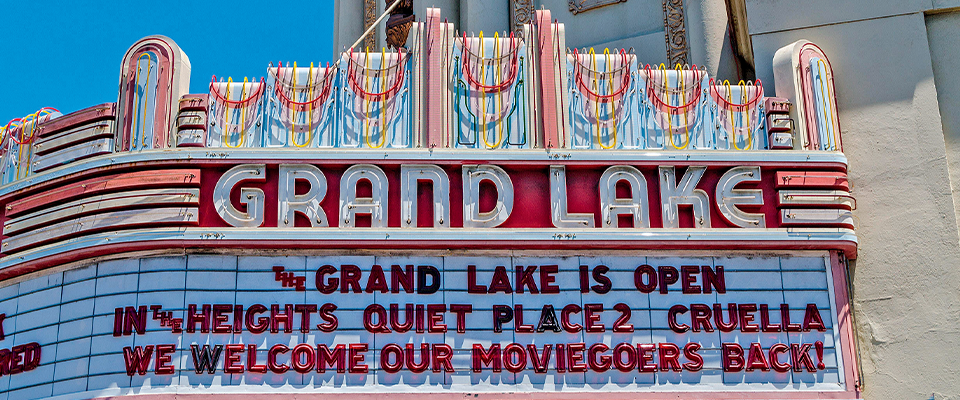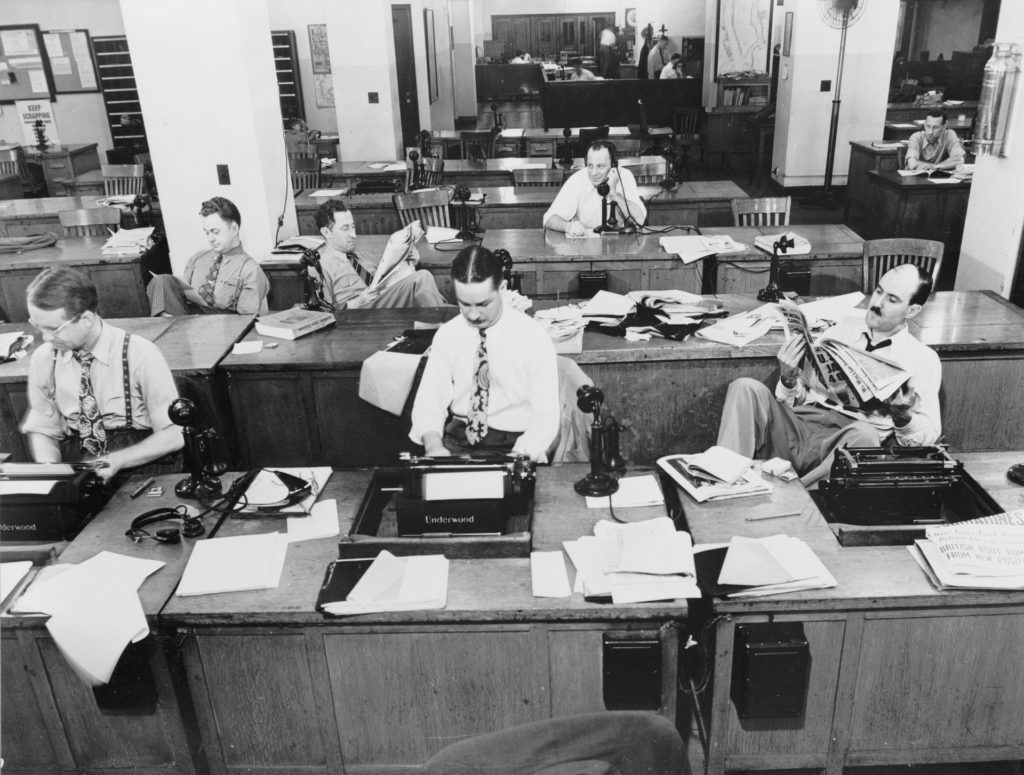The winner of our student essay contest muses on shuttered theaters and how the pandemic has altered our leisurely outlets.
Welcome to “Student View,” a new column featuring the thoughts, opinions, and musings of undergraduate writers at Cal. This summer, for our second “Student View” essay contest, California asked current Cal students to answer the question: What gives you optimism for the future? Below is the winning essay. For entry entry rules and other winners, click here.
I LEARNED HOW IT FELT to miss the movies and how it felt to mourn them. Fenced out of my favorite places, I found peace in the dissonance of wishing I were somewhere that’s designed to transport me somewhere else.
Before quarantine, the last film I saw in theaters was the 2020 version of Emma. My grandma and aunt bought matinee tickets, and they took me to our local Arclight Sherman Oaks theater—the one by the Cheesecake Factory, an abandoned furniture store, and a stone plaza. I remember it rained that day, and all of the colors everywhere deepened. Rain ricocheted against the plaza’s bubbling fountain, and everyone was eager to get inside, away from the onslaught. When we came out of the theater, the downpour had stopped, but the ground still steamed. Most people remained indoors, and they would effectively and unknowingly stay there for the next year and a half.
The pandemic blurred the line between work and leisure. It was insufferable to spend days crouched over screens of different sizes. Going back to the movies replenished my reservoir of optimism.
When the pandemic shuttered movie theaters, streaming services were heralded as their successor. It’s not that I don’t enjoy streaming services, but I’ve become wary of the isolation they create. Theaters are at their best when they’re communal—the trailers, in all their idealism and promise, conjure an incandescent magic and bewitch everyone, riveting their attention to the screen. The air conditioning hums, and the smell is buttery and saccharine.
At the same time, when privacy is a choice, there are few acts more self-restorative than watching a beloved movie at home—something as jubilant as Singin’ in the Rain or as all-consuming as Amadeus. When I stream movies, the ceiling fan in my bedroom also hums, but instead of a plush seat, I’m perched belly-down in a twin-sized bed under the fluorescent glare of my overhead light.
I’ve always thought movies were my pool of hope, and in this sense, the pandemic made me a better swimmer. When reality’s tensions simmered, I could ease the burn, test the waters with a movie like Before Sunrise, and by the end of the hour, I was fully submerged in dusky, ethereal Vienna. It’s more than a way to pass time, it’s a way to transcend it.
When movie theaters began to reopen, I was eager to restore my own norms, a feeling that quickly became muddled with the anxious leftovers from this year inside. The first movie I saw in theaters was A Quiet Place: Part II. Cautiously armed with our vaccine cards and Tuesday matinee tickets, my friend and I were relieved to see only a handful of other patrons.
Somehow, my favorite part of the movie was the audience’s silence. In the moments when we held our breath, we could hear the explosions and exclamations from the room next door as it played the ninth installment of the Fast and Furious franchise. People are rightfully nervous, but the movie theaters’ absence was heavy as lead.
The pandemic blurred the line between work and leisure. It was insufferable to spend days crouched over screens of different sizes. Going back to the movies replenished my reservoir of optimism. I realized we’re not inching backwards, not toward the norms we once knew. Instead, we’re compelled to move forward. The credits will roll, but if we’re patient, we can catch the scene at the end—the flare that unsettles the dread of permanence, that baits promise, and that reminds us to keep looking ahead.
Maya Thompson, originally from Los Angeles, is a rising junior at UC Berkeley, where she studies English and Russian literature and serves as the deputy arts and entertainment editor for the Daily Californian.
From the Fall 2021 issue of California.





















